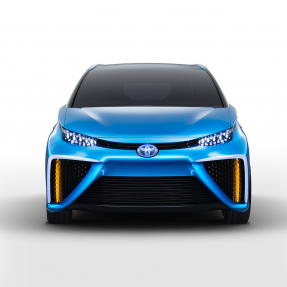Introducing the Toyota Fuel Cell Vehicle (FCV). The same hybrid technology at the heart of the Prius but with hydrogen and fuel cell stack. With a driving experience that’s on pair with a gasoline engine. It’s not just the next movement in automotive technology; it’s the next big movement towards a better future.
How it works: a cleaner, renewable fuel source. It’s simple science. Our fuel cells generate electricity from hydrogen, a fuel that can be produced from a variety of renewable sources like solar and wind power.
Hydrogen gas is fed into the fuel cell stack where it is combined with oxygen. The electricity produced by its chemical reaction is used to power the electric motor and to charge the battery. And the only emission from this reaction? Water vapor.
The FCV is anticipated to have an EPA driving range rating of approximately 300 miles. And a refueling time as low as three minutes, which is roughly the same as a gasoline vehicle. So in no time you can hit the road and go for the long haul. The FCV is emission-free. As in no CO2, no greenhouse gas produced, no emissions.
At the Consumers Electronics Show this week Toyota claimed that a production version of its four-door midsize FCV concept fuel cell sedan will hit showrooms some time in 2015.
producer: toyota
period: 2014









